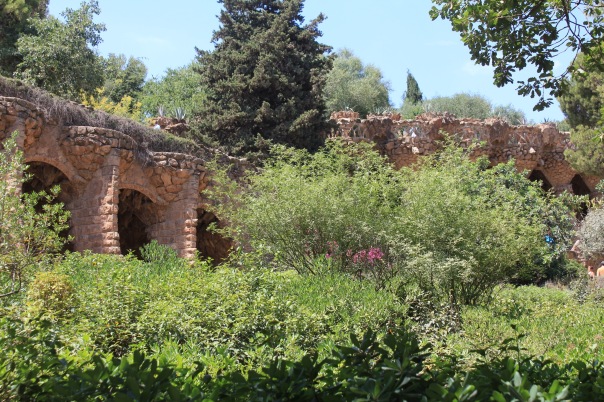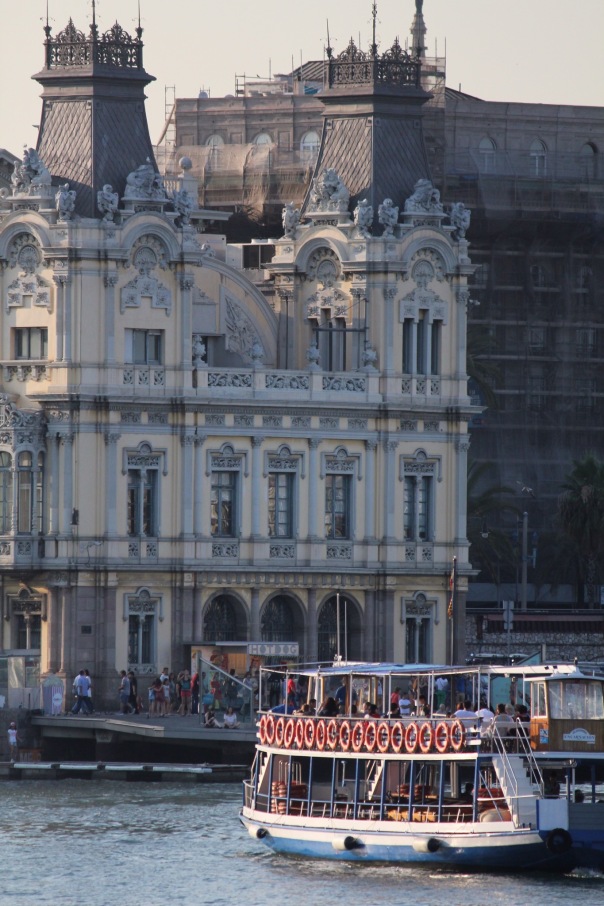Cantors Mission to Spain Day 1
Good morning (or evening)! We’ve had a wonderful first day in Barcelona after our overnight flight from Atlanta. While we missed a stunning a tour of the Barcelona Jewish Quarter (known as El Call), we were able to catch the morning presentation by Professor Berk entitled, “The ‘Greatest’ Year in Spanish History. In 1492, Columbus sailed the ocean blue…and two other things occurred.”
As I mentioned in my initial post, I had some idea of where Professor Berk would take the lectures, and in fact his train of logic included parallels (and differences) to his analysis of the German Jewish journey from our Germany trip 4 years ago. It is fascinating to see these two stories of German Jewry and Spanish Jewry, take center stage 4 years apart (in lecture time) and hundreds of years apart in real time.
A few notes from Berk:
1492 was a great year for Spanish Catholics. With the conquest of Granada on January 1, the last stand of Muslim Spain was now over.
On March 31 (I’ve mentioned this as being the only factoid I know about my birthday other than sharing it with Al Gore) of the same year, in the Ambassador’s room at the Alhambra, the edict was signed to expel the Jews from Spain. This was the culmination of a long series of events. Berk takes us back:
711- Muslims cross the Straights of Gibraltar to take Spain. At the same time, Berk brings up the Mongol horsemen who rode their way through multiple continents. The question arises: why move? And in this case, why are the Arabs expanding (or leaving) in 711? Jihad (spreading faith by war)? Food shortage? The classical definition of Jihad wins out.
When the Arabs go on the March, 97% of Spain is conquered. This is a “relatively” good time for the Jews. This academic hyopthesis, known as La Convivencia (the coexistence) claims that during this period from the early eight century until 1492, the Muslims, Christians and Jews lived in “relative” peace.
I mentioned this in my earlier blog, but Berk reminds us of this relationship between Jew and Muslim as parallel to what we learned 4 years ago. He states “Don’t look at German-Jewish relations through the prism of the Holocaust, just like you shouldn’t look at the Muslim-Jewish relations through the prism of the present. Times for Jews were “relatively” good as Dhimmis (protected people’s)- legitimate but inferior contributors to society.
So what happens in 1492? The Church is on the March, unified, while there is disunity amongst the Arabs. This is the time of “militant orders” (it wasn’t uncommon to find militant monks).
And the Jews? As we know, in history, perception of reality is what matters. The growing mythology that began with Matthew Chapter 27 has taken form in two ways- Jews are guilty of ritual murder and host desecration so (rabbis supposedly stabbing wafers). In spite of the fact that 1/3 of the Jewish community in Spain opts to convert, there is a growing fear that Judaism will subvert Christianity from within. “Old” Christians are upset- and racist thought comes to the forefront with this notion of “purity of blood.” That was the fear of the church, but the state and the masses also had fears- the legislation that barred Jews from having certain rights was null and void when 1/3 of them converted. There’s lots more to write but that’s a good start on Berk’s lecture ….
We enjoyed a delicious meal at a local all Vegetarian restaurant Teresa Carles (highly recommended!), and later we scarfed down Grilled lamp chops at Maccabi Kosher! Our group continued to Northeast Barcelona, seeing the great works of Antoni Gaudi, whose architecture defines much of the modern city. We passed La Pedrera, an undulating apartment block completed in 1912. This was Gaudi’s last civic work before dedicating 46 years of his life to the Sagrada Familia. We toured Parc Guell, a 14 year project by Gaudi in which the patron Eusebi Guell envisioned gardens, artistic villas and public spaces. This is home to famous mosaics, the most famous being a whimsical dragon. Gaudi’s perspective took into account that no two things in this universe are alike, and the variety of styles and colors incorporated into the park make for a magical experience.
We finished our touring for the day at the impactful Sagrada Familia. While the first stone was laid in 1882, the up and coming Gaudi took over as principal architect a year later and continued with the project until his untimely death in 1926. The church is filled with rich colors, mosaic tiling and gargoyles, as well as a helicoidal stone stairway. From inside and outside, and in spite of the fact that Gaudi has been deceased for the past 90 years as the church continues its construction, the project is totally Gaudi.
The project is financed solely by the millions who visit the sight (set to complete on the 100th anniversary of Gaudi’s death in 2026). No political or religious financial aid. This fact, alongside the other spaces Gaudi worked on throughout Barcelona, paint an inspiring tail- that creativity is meant for the masses- we all need colors and spaces for radical thought – from our apartments to our places of worship.
Tomorrow, Girona!
Posted on July 5, 2016, in Cantors Mission, Cantors Mission to Spain. Bookmark the permalink. 3 Comments.







Hi Hazzan,
My name is Jessica Gertler Silverman. My mother in law is Judy Silverman in Jacksonville Florida. My mom, and grandma are both on your trip right now. My mom is Pauline Gertler, and my grandma is Minnie Osher. I don’t know if they know who you are, please go over to them and make the connection. I just found out that you were on this trip from Judy.
Have a safe and wonderful time! I will follow your blog.
All the best,
Jessica
Hello to Leora, to Judy Miller and to Ben Tisser of HP BethEl where I am a volunteer in with the choir on some shabbats). Love your pics! Enjoy enjoy!
Thank you so much for writing the blog, the trip has become a blur and the photos you posted were very helpful in remembering. You have a lovely family!